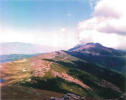Some notes on Almeria
Almeria. External links: almerianatural.com
|
|
||||||||||
- Rural tourism in Andalucia
- Rural tourism in Sierra de Grazalema
- Rural tourism in Granada
- Rural tourism in Lecrin Valley
- Rural tourism in Malaga
- Rural tourism in Serrania de Ronda
- A ragon
- Rural tourism in Aragonese Pyrenees
- Rural tourism in Sierra de Guara (lammergeyers)
- Cantabria
- Rural tourism in Picos de Europa
- Rural tourism in Catalonia
- Rural tourism in Aiguamolls de l'Empordà
- Rural tourism in Aigüestortes i Sant Maurici
- Rural tourism in Catalan Pyrenees
- Rural tourism in Ebro Delta and Els Ports
- Rural tourism in River Ebro (Tortosa)
- Rural tourism in Castilla- La Mancha
- Rural tourism in Guadalajara
- Rural tourism in Castilla-Leon
- Rural tourism in Arribes del Duero
- Rural tourism in Central Spain
- Rural tourism in Sierra de Gredos
- Rural tourism in Sierra de la Culebra (wolves)
- Rural tourism in Zamora
- Rural tourism in Extremadura
- Rural tourism in Caceres - (Sierra de San Pedro, & Tajo Internacional)
- Rural tourism in Trujillo
- Rural tourism in Galicia
- Rural tourism in La Coruña (Rias Baixas)
-
